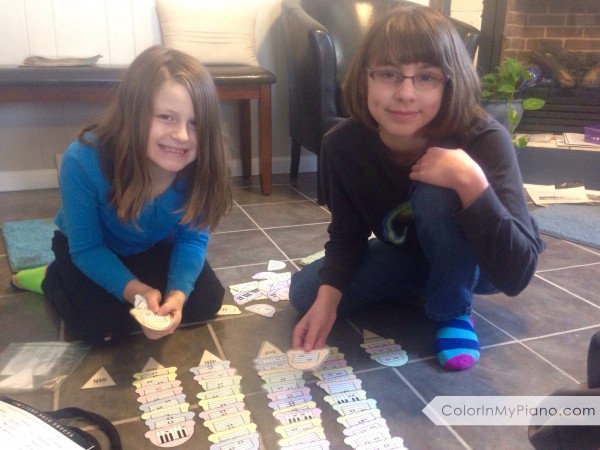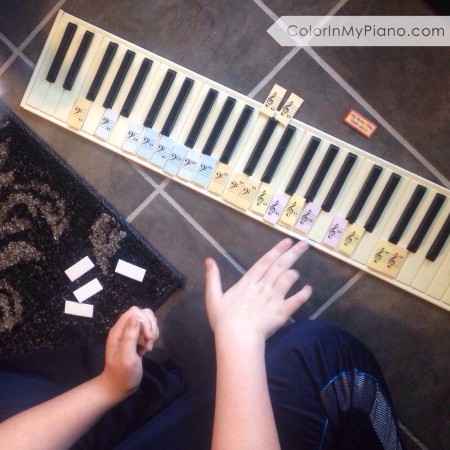My studio recital is coming up, so my students and I have been busy with recital prep. This means we spend a lot of time during the lesson practicing the elements of good stage presence (practicing the bow, etc) and practicing run-throughs by memory. At almost lesson I’ve been teaching this week and last, I’ve been taking video with my iPhone so that we can watch, listen, and discuss afterwards. Having the video running helps the student get a little bit nervous and mentally rehearse what it is like to be at the actual performance.
At the March “Piano Party” (my monthly studio classes) I held on Saturday, we ran a recital rehearsal of sorts.

I began our time together by demonstrating for students an poor example and a good example of stage presence. The students giggled about my poor example and enjoyed letting me know what I did poorly. 🙂
These are the things we look for:
- Walking (not too fast) up to the piano.
- Checking bench distance from the piano.
- Sitting and putting hands in lap (as opposed to having fingers on the keyboard before being fully seated).
- Taking a moment to mentally hear the first few measures, to set the tempo.
- Taking a deep breath, lifting hands to the keyboard, and then playing the piece.
- Lifting hands out of the keyboard and place them in lap (without turning head to face the audience yet).
- Standing with a smile to the audience, and taking a bow.
- Walking back to sit in the audience.
Each student took a turn performing his/her recital piece, paying attention to all the details of good stage presence. I asked students to provide helpful feedback for each other.
 I think this is so valuable for helping students feel prepared for a performance. If we educate and equip students for a performance, they are much more likely to be successful and perform with confidence. As one of my students once told me: “I didn’t feel as nervous at the recital because I had already played my piece for other students before.”
I think this is so valuable for helping students feel prepared for a performance. If we educate and equip students for a performance, they are much more likely to be successful and perform with confidence. As one of my students once told me: “I didn’t feel as nervous at the recital because I had already played my piece for other students before.”
Our recital rehearsal filled most of our time together, but we did have about 20 minutes left for some games, much to my students’ delight. I helped organize my students into pairs and pulled out a variety of our favorite music games, including the Ice Cream Intervals game, Anne Crosby’s Teeny Tiny Flashcards to use with a large, plastic silent keyboard, Anne Crosby’s Funny Farm Game, and my Adventures in Music board game. Every 5-6 minutes or so, I asked students to exchange games.
It was a fun gathering!



Good summary of performance practice. I actually have my students prepare one piece to perform for me at each lesson, complete with bow and applause. This takes no more time than hearing the piece anyway and then working on mistakes or polishing, and insures that the steps for performing, the bow, etc are very very familiar whenever a more forma performance takes place. We call it their ‘Special Piece’ of the week, and it is chosen from their repertoire list of polished pieces.
And now for my question about the fine-looking game your students are playing in the photo. Is it one of the ones with the ice cream cones?
I love your ‘Special Piece’ of the week idea, Kathy! I might have to start doing something like that!
To answer your question, the first photo in this post shows my Ice Cream Intervals game, which is sold in my digital shop. The second photo shows Anne Crosby’s Teeny Tiny Flashcards, which I like to use on the floor with a large, plastic silent keyboard that I happen to own.
This is really good. I think it is really important to teach this. Back in the day, I had to learn this on my own. What a difference it may have been, if my teachers added the things outlined here to my recital preparation.